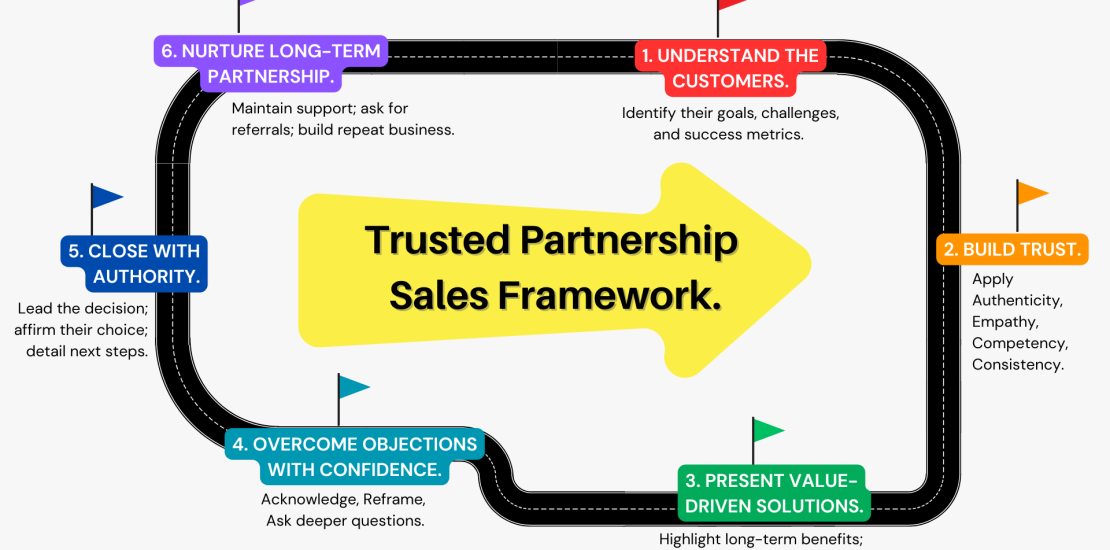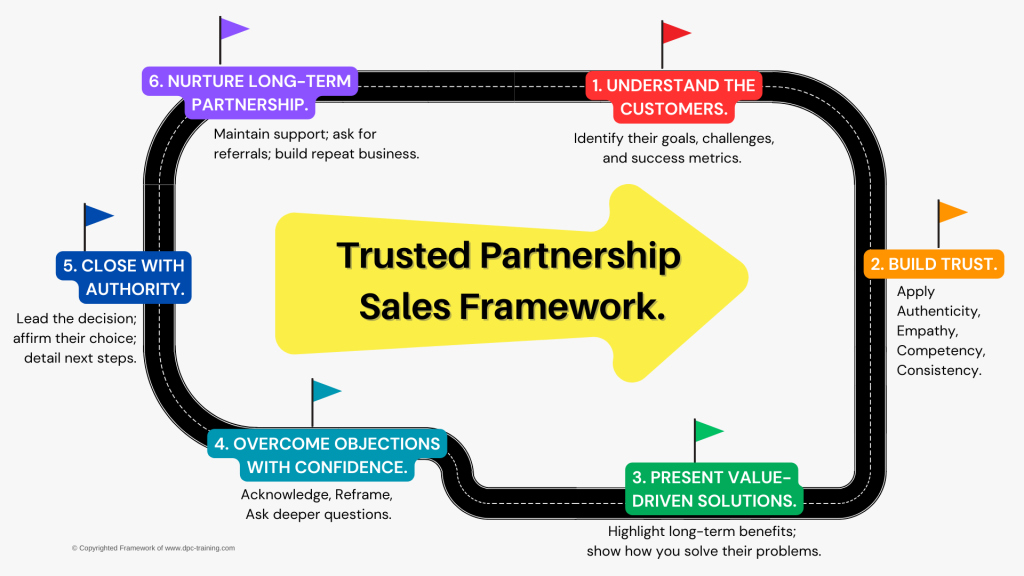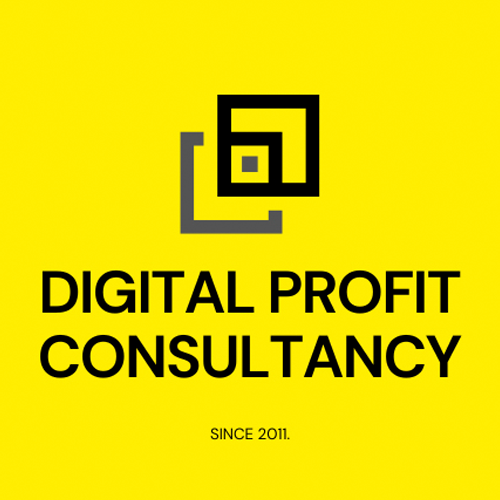Trusted Partnership Sales Framework: Build Genuine, Long-Term Customer Relationships
- March 4, 2025
- Posted by: Leik Hong
- Category: Sales

Are you tired of high-pressure sales tactics that leave both you and your customers feeling uneasy? You’re not alone. Businesses today are shifting away from transactional models and seeking more customer-centric, relationship-driven approaches. That’s where our Trusted Partnership Sales Framework comes in—delivering a holistic method for turning initial interest into long-term, mutually beneficial relationships.
Why Traditional Sales Tactics Fall Short
Many sales professionals rely on quick-close methods that might win a single deal but damage the potential for future growth. The hard-sell approach often repels modern buyers in an era where customer experience and reputation are everything.
Key disadvantages of pushy tactics:
- Erodes customer trust and loyalty.
- Focuses solely on short-term gains, not continuous revenue.
- Relies too heavily on discounting or aggressive follow-ups.
To stand out in today’s competitive market, you must offer real value, empathy, and ongoing support. Our six-stage process is designed to do precisely that.

Introducing the 6-Stage Trusted Partnership Sales Framework
1. Understand the Customer
Objective: Identify your prospect’s core objectives, challenges, and success metrics.
Why it matters: Customer-centric selling starts with deep understanding. By knowing their pain points (e.g., slow production times, budget constraints, and market expansion goals), you can tailor your approach and avoid generic pitches.
Quick Tips:
- Conduct a brief discovery call or meeting specifically to listen.
- Ask open-ended questions like “What would success look like to your team?”
- Note key themes and recap them back to ensure alignment.
2. Build Trust
Objective: Establish authenticity, empathy, competency, and consistency (AECC) so prospects see you as a reliable partner.
Why it matters: Trust is the foundation of any sale, especially in B2B transactions or high-ticket offerings.
Quick Tips:
- Share relevant success stories or case studies.
- Show empathy by acknowledging their unique situation.
- Consistently follow up on promised actions—no missed deadlines or unanswered emails.
3. Present Value-Driven Solutions
Objective: Position your product or service as the best fit by focusing on real business outcomes, not just product features.
Why it matters: Customers today seek clear ROI and long-term benefits—purely technical pitches fall flat.
Quick Tips:
- Compare current “pain costs” vs. potential “future savings.”
- Highlight unique differentiators, whether it’s unmatched support or innovative technology.
- Use concise, user-friendly data—charts, infographics, or real numbers.
4. Overcome Objections with Confidence
Objective: Address and resolve concerns without defaulting to discounts or high-pressure tactics.
Why it matters: Objections often signal genuine interest. Effective handling reinforces trust and clarifies the decision path.
Quick Tips:
- Acknowledge concerns: “I see why you’re worried about cost.”
- Reframe them: “Many clients had the same concern until they saw how fast they saved on maintenance.”
- Ask deeper questions: “What would you consider a successful ROI in the first six months?”
5. Close with Authority
Objective: Confidently finalize deals while ensuring customers feel positive about their decision.
Why it matters: A hesitant or shaky close can create buyer’s remorse and damage the relationship. A clear, assured close fosters mutual respect.
Quick Tips:
- Use assumptive language: “Let’s discuss the next steps to get you started.”
- Reassure them about post-sale support or onboarding processes.
- Provide a clear timeline for delivery or implementation.
6. Nurture Long-Term Partnerships
Objective: Maintain continuous engagement to secure repeat business and earn referrals.
Why it matters: Retention is cheaper than acquisition. Plus, advocates spread the word, building your brand credibility.
Quick Tips:
- Schedule periodic check-ins to measure success and gather feedback.
- Offer complimentary upgrades or exclusive deals for loyal clients.
- Ask satisfied customers for referrals or case-study collaborations.
How to Apply This Framework in Your Sales Process
- Start with Discovery: Block time specifically for the “Understand the Customer” stage. This will keep you from rushing into a pitch.
- Map Your Sales Funnel: Align each framework stage with your CRM pipeline steps (e.g., “Stage 1: Qualification,” “Stage 2: Relationship Building,” etc.).
- Refine Your Messaging: Focus less on features and more on value and impact. Craft presentations that highlight genuine ROI, success stories, and empathy.
- Follow Up Consistently: After you close a deal, move customers into a post-sales nurture sequence. Ask about their experience and look for opportunities to help them further.
When appropriately integrated, these six stages elevate customer satisfaction and sales outcomes. You’ll close deals more efficiently and build a network of repeat buyers and enthusiastic advocates.
Ready to Transform Your Sales Approach?
At DPC-Training, we specialize in personalized coaching and programs built around the Trusted Partnership Sales Framework. If you’re ready to replace pushy tactics with authentic relationship-building, contact us to learn how we can tailor a workshop or consulting session for your team.
- Email: info@dpc-training.com
- Phone: +60 12474 9678
Join us in creating sales processes that deliver real value and long-term success. Because in today’s marketplace, trust and partnership aren’t just “nice to have”—they’re the keys to sustainable growth.


